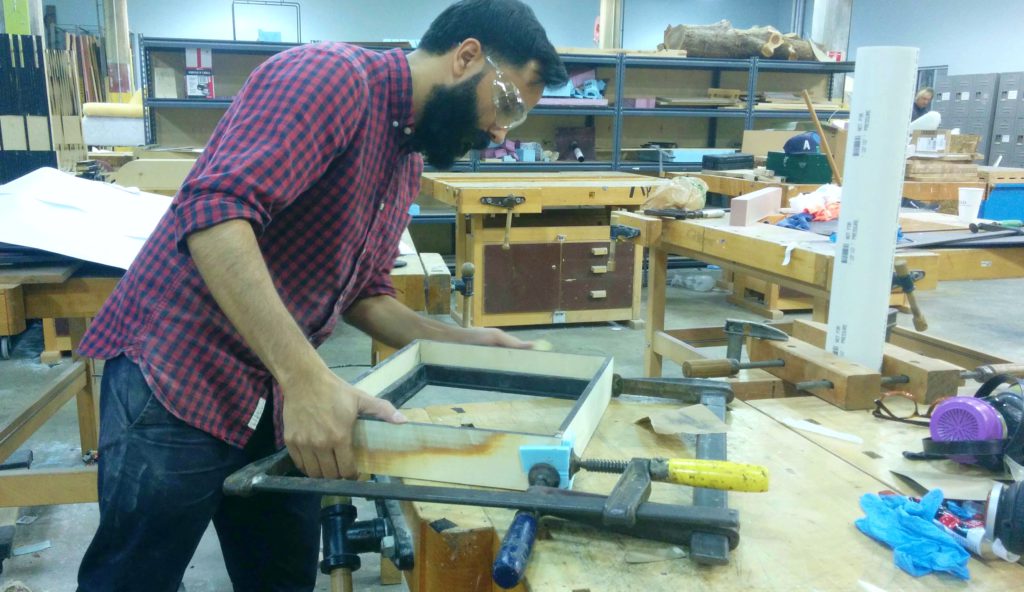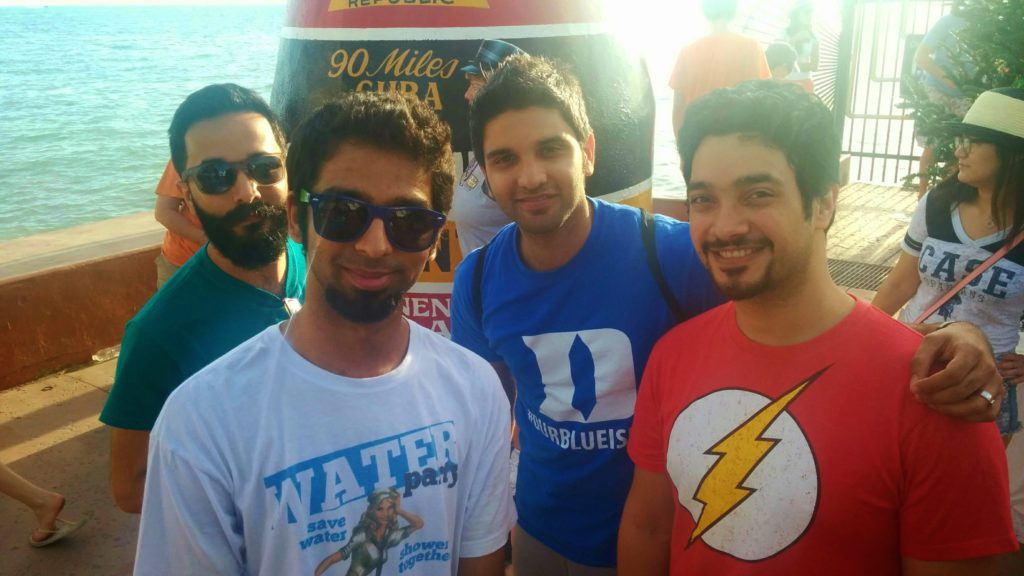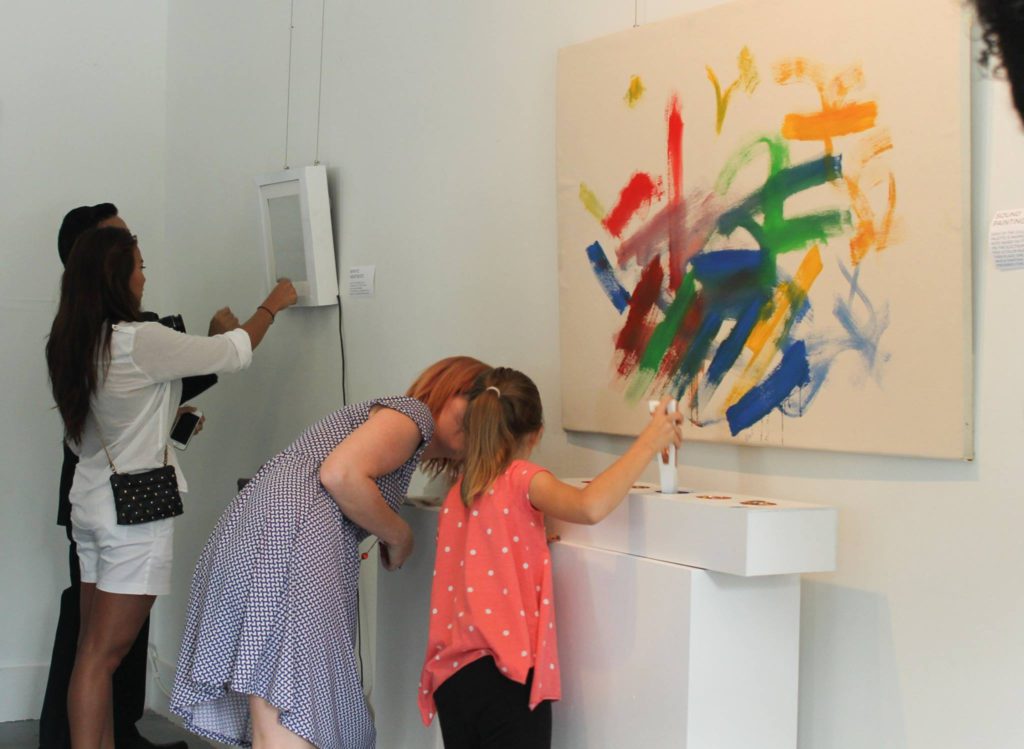
The Fulbright Foreign Student Program enables graduate students, young professionals and artists from around the world to study and conduct research in the United States. Since 1945, the prestigious program has allowed more than 200,000 students and professionals from foreign countries to achieve their dreams in the U.S. The Fulbright program provides generous funding and benefits including round-trip transportation to the host country, room, board, and incidental costs, book and research allowances, and full or partial tuition.
To learn more about the experiences of foreign students in the Fulbright program, we spoke to Ali Murtaza from Lahore, Pakistan, who completed his Master of Fine Arts (MFA) in Industrial Design as a Fulbright grantee at Savannah College of Arts and Design in 2015.
1. What inspired you to apply for the Fulbright Foreign Student Program?
When I was around 10 years old I had decided I wanted to become an artist. A few years later, I learned that the type of ‘artist’ I wanted to be is called a ‘designer’. Over time I learned more about the various fields within design, and in 2006 was accepted into a Bachelor of Fine Arts (BFA) visual communication design program at a university in Lahore. Soon after the program started, I became more sure than ever that a career in design was the right choice for me. By my sophomore year, however, I had also begun realizing that I would eventually want to move beyond visual communication and illustration and into designing physical products. Upon discovering the field of industrial design and realizing that all the graduate programs that interested me were in the U.S., I applied for the Fulbright scholarship. Two years after completing my undergraduate degree, I enrolled in the MFA Industrial Design program at Savannah College of Art and Design (SCAD).

2. What was the most challenging aspect about participating in a fellowship / graduate program in the United States?
I always knew graduate school was going to be tough. No matter how well prepared you are, grad school is meant to challenge and push you. I was entering an industrial design MFA degree without any background in industrial design – something my Fulbright adviser had actually warned against. So needless to say, the learning curve while starting off was steep. But this was also the most fun I had ever had while learning, which made things a little easier. Similarly, while having to compete with extremely talented graduate students from all over the world seemed like an insurmountable challenge at the start, it pushed me to work harder than I ever had just to feel like I belonged.
As I settled into the degree, producing work that was up to SCAD’s standards became easier, but the challenges did not. With the rising quality of work, expectations rose as well. My peers, professors and especially myself expected each project to be better than the last. These increasing expectations made for extremely tough work schedules and little sleep, but ensured that I was pushed to keep learning and getting better throughout my three year MFA degree.
The last 7 to 8 months spent working on my MFA thesis were easily the toughest. Having to get back into the habit of reading academic books and papers, conducting immersive research and writing were all challenges the first two years of grad school had been priming me for, but this was still the most I had ever been pushed. In addition to those challenges, industrial design theses also have to be accompanied with physical products that represent the ideas presented in the thesis, adding another layer of complexity to the process.
This complexity and pressure was when I felt the handicap of being from elsewhere the most. While building my product prototypes, I spent as much time on the phone with my brother (who helped me with the engineering aspect of my products) as I did with any of my professors. Not having a car as I did back home sometimes delayed work a full day just because I couldn’t get to the store in time on my bike. Sometimes it would just have been nice to have some Pakistani comfort food to come home to after 36 hours in the studio!

3. What tips would you give others applying for the Fulbright Foreign Student Program?
I know numerous great applicants who have backed out of applying for Fulbright because of a fear of the Graduate Record Exam (GRE) test. The GRE is an intense, computer-based test of your critical thinking, analytical writing, verbal reasoning, and quantitative reasoning skills. While GRE is a compulsory part of the Fulbright application and applying to many graduate schools in the United States, in most cases it is far from the most important part. In fact, a considerable proportion of Fulbright recipients have below-average GRE scores, so if the GRE is the reason that potential applicants think their application will be rejected, they really should be applying.
I would also suggest reading your country’s Fulbright Call for Applications very carefully to get a good idea for the fields of study they are focusing on for the next cohort. If a country’s particular focus aligns with your interests, make sure you make that connection as clear as possible in your application. The emphasis you place on how your skills and interests relate to what the host country wants could increase your chances for a life-changing opportunity!
Additionally, I only realized what an amazing blessing receiving the Fulbright scholarship was after I had spent some time at SCAD. Coming from a country where student debt isn’t a major problem and college students usually don’t hold part-time jobs to pay for necessities, I really started appreciating the privilege of receiving a stipend to attend grad school when I saw how tough it was for a lot of my American friends. I was in their country being paid to go to graduate school when they were often still paying back students loans from their undergraduate degrees while accruing more debt in grad school. I would suggest recognizing this privilege as early as possible, and then working as hard as you can to justify it to yourself and to those around you.
Ali Murtaza is a Fulbright alumnus and holds a BFA in Visual Communication Design and MFA in Industrial Design from Savannah College of Art & Design (SCAD). Ali has over three years of teaching experience at the undergraduate level and has been working as a design consultant since 2007. He has worked with clients like Dolby Labs, Coke USA, Audi, Grid Impact, the Biomimicry Institute, and Innovations for Poverty Alleviation Lab (IPAL). He currently manages Makeistan, Pakistan’s first academic maker space, as well as teaches design in the Electrical Engineering department at Information Technology University (ITU) in Pakistan. He is also a Rajeev Circle Fellow.
© Victoria Johnson 2017, all rights reserved.